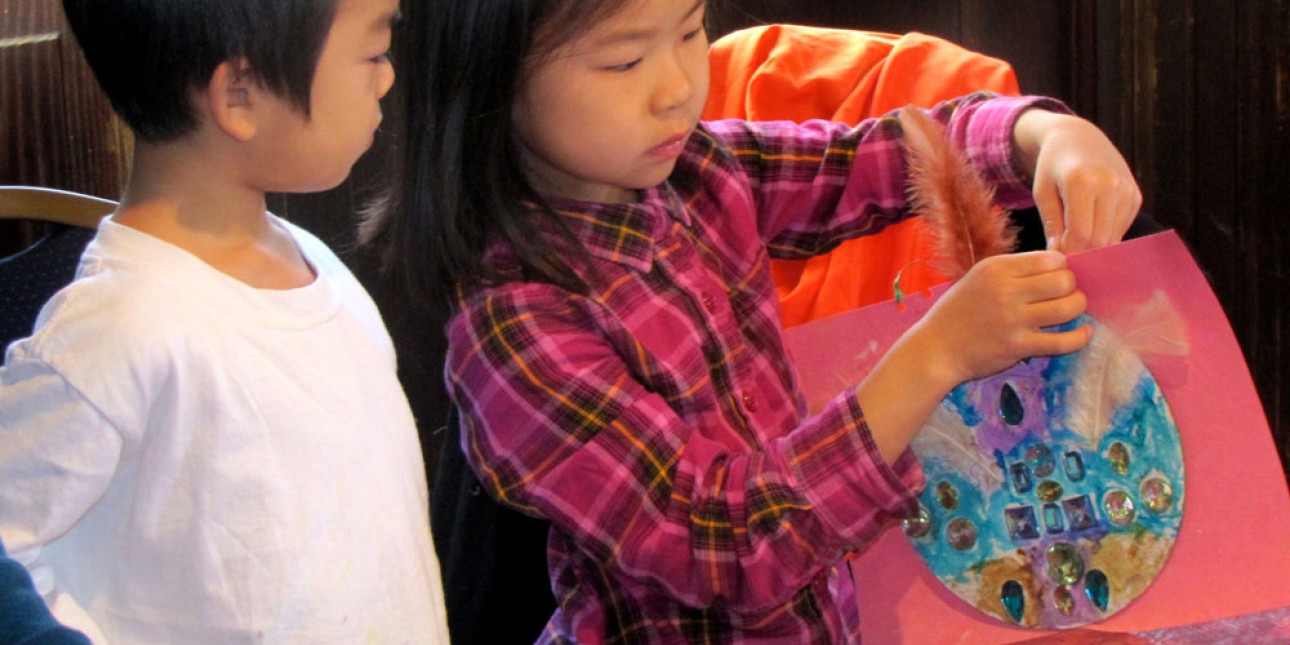June Message from Deb Green

Creativity Abounds at PIC
Many years ago when I began teaching I loved having the children participate in what I thought were creative art experiences that included projects such as tracing our hands and adding feathers to create Thanksgiving turkeys or adding “googly eyes” to the pre-cut Halloween jack-o-lanterns. Many years later and after many professional development experiences, I learned that while these “products” may provide something for parents to display on the refrigerator, the experience of creating them had little value for the children. Unfortunately in many programs, these kinds of experiences continue to be the norm.
At PIC, the children are involved in many process-oriented experiences on a daily basis. Recently I watched a three-year old child as he painted at the easel. He began by creating strong vertical lines with each of the colors of the rainbow. After each color line was complete, he stood back and assessed his work with a smile. Then he began mixing two colors together and seemed delighted to have created a new color. After quite a long while, the child began mixing all the colors together and quickly had a large brown “blob” on his paper. No longer interested, he walked away. While the product had little significance for this child, the actual process of painting and learning about color had great value.
In other PIC classrooms I observed children creating collages from recycled materials, taping cardboard paper towel holders to the sides of shelves to create fast tubes for cars, sorting and classifying bottle caps, using yarn and ribbon to measure objects, creating robots from boxes, using popsicle sticks and twigs to create marks in clay and using stones to create houses for insects. The list could go on and on.
When children play with open-ended materials, they explore the look and feel of the materials. They develop a sense of aesthetics by investigating what is beautiful and pleasing about the material. The wide variety of materials presented flows into both artistic and scientific creation. When children have the chance to notice, collect, and sort materials, and when teachers respond to their ideas, the children become artists, designers, and engineers. Products are usually an adult value, and once children know they can explore and discover on their own, they stop worrying about how things must look.
What do process-focused experiences look like:
There is no sample for children to follow.
There are no step-by-step instructions.
There is no right or wrong way to explore and create.
The activity is focused on the experience and on exploration of techniques, tools, and materials.
Everyones ideas and work are unique and original.
In this era of performance standards and outcome-based education, it is more important than ever for educators and families to articulate the values and support the creativity of play and exploration as ways to meet the standards––and to go beyond them. I was delighted to see that The Association for Childhood Education International (ACEI) has enriched and expanded the definition of creativity.
Its 2013 position statement on creative thought clarifies that “we need to do more than prepare children to become cogs in the machinery of commerce.” The international community needs resourceful, imaginative, inventive, and ethical problem solvers who will make a significant contribution, not only to the Information Age in which we currently live, but beyond to ages that we can barely envision. (Jalongo 2003, 218)
I love seeing some of the creative ways children and teachers are using the items collected in our new Recycleteria. Children do amazing things when they have access to a wide variety of creative materials such as reusable resources and open-ended materials. Children are so trusting of the “process” and as adults, we have so much we can learn from them!